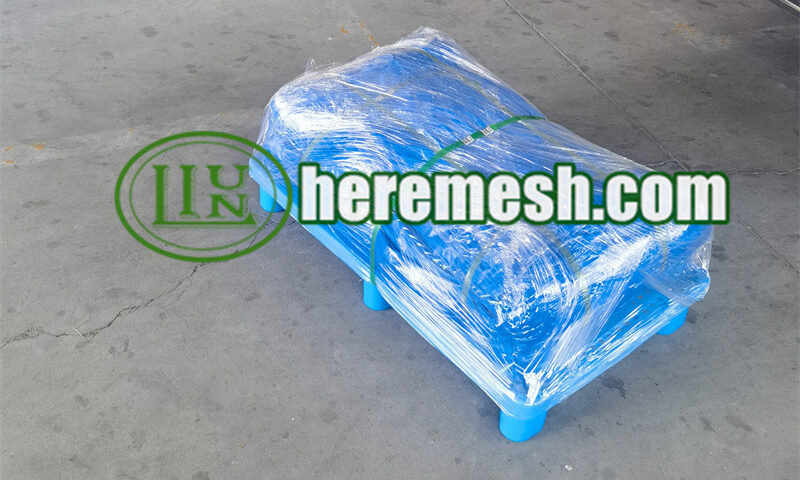Ferrule Mesh for Kea Aviary Order Shipping

Eco-Friendly Flexible Mesh Panels for Birds Aviary
08/08/2025
Safety Barrier for Primates: Gibbon Cage Fence
08/27/2025This week, Liulin Company completed an order for Kea aviary mesh for a bird park in the UK. The goods were successfully shipped to the UK this week.
This order marks the second time this user has chosen to collaborate with us. This clearly demonstrates their high recognition of the quality and service of our stainless steel Kea aviary mesh products. As a company that has long specialized in the production of stainless steel protective mesh, we have consistently earned user trust through strict production standards and reliable delivery capabilities. This repeat order not only strengthens our partnership but also reaffirms that our products’ superior performance in corrosion resistance and structural strength fully meet the demands of high-end international zoo facility construction. In the future, we will continue to optimize our production processes to provide global customers with even better stainless steel protective solutions.
The stainless steel ferrule mesh ordered this time will be specifically used for the construction of the Kea aviary. Its high-quality stainless steel material possesses excellent corrosion resistance and impact resistance, perfectly suited for humid environments and parrot pecking. The mesh panels feature exquisite ferrule craftsmanship, ensuring that the 25mm × 44mm aperture prevents parrots from escaping while maintaining good ventilation and natural light. The smooth surface of the mesh prevents injury to birds during contact. The 1.6mm wire diameter design maximizes visual transparency while ensuring safety, allowing visitors to clearly observe the Kea’s natural behavior. The product has a lifespan of over 20 years, providing users with a long-term reliable solution.
What is stainless steel ferrule mesh?
Stainless steel ferrule mesh is a metal mesh made by connecting stainless steel wires with stainless steel ferrules. Its key feature is that each intersection is secured with a ferrule, forming a sturdy mesh structure. This mesh has the characteristics of high strength, high flatness, and resistance to deformation. It is commonly used in bird cages, fences, protective nets, and other scenarios that require high stability.
The difference between stainless steel ferrule mesh and stainless steel woven mesh lies in their distinct manufacturing processes. Stainless steel rope mesh is produced through a manual weaving process where metal wires are interlaced. Both products exhibit excellent flexibility and impact resistance. Ferrule mesh has a relatively short production cycle and can be produced in large quantities. For bird cage construction, stainless steel ferrule mesh is preferred due to its durability and excellent escape prevention performance. It particularly suitable for large parrots (such as macaws and cockatoos) with strong physical strength.
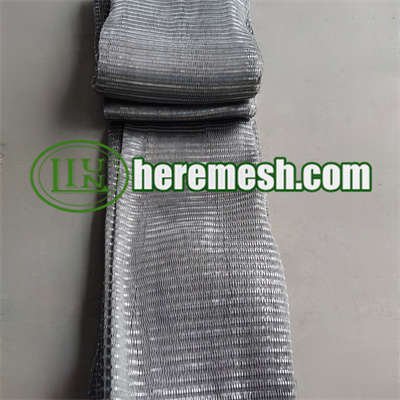
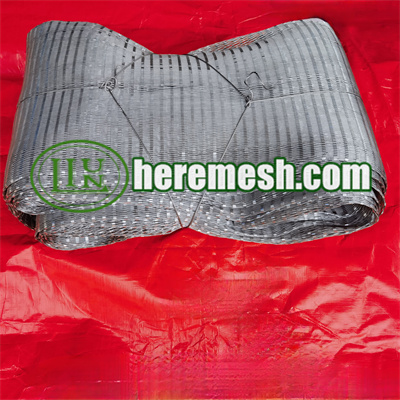
How to build a safe and reasonable Kea aviary for a bird park using stainless steel ferrule mesh?
1. Selecting the appropriate material and specifications
The Kea parrot is a large, highly intelligent, and powerful-beaked parrot native to New Zealand. Therefore, the bird cage mesh must be sufficiently sturdy and possess impact resistance and corrosion resistance. We recommend using 304 or 316 stainless steel mesh, as it is resistant to rust and suitable for long-term use. The mesh size is recommended to be 25mm, which prevents the Kea parrot’s head or claws from getting stuck while effectively blocking its escape. The wire diameter should be at least 1.2mm or above to ensure the mesh can withstand the Kea’s biting and impact.
2. Design a well-structured aviary
Stainless steel ferrule mesh is inherently strong, but it still needs to be secured with a sturdy frame. The frame posts should be buried underground or fixed to a concrete foundation to prevent Kea parrots from shaking and damaging them. It is recommended to secure the mesh panels to the frame using zip ties or bolts to prevent loosening. The height of the Kea aviary should be at least 3 meters, with ample three-dimensional space provided, such as perches, climbing frames, and sheltered areas, to mimic their natural habitat. The roof can be designed with a sloped structure and extended eaves. It can prevent water accumulation and prevent parrots from using it to escape. The ground can be fitted with anti-digging netting to prevent Keas from using their strong beaks to dig their way out. Additionally, regularly inspect the mesh for damage and maintain it promptly to ensure long-term safety.
3. Ensure there are no sharp edges to prevent injury to birds
Kea parrots are curious and like to explore their environment with their beaks, so all connection points and mesh edges must be smoothed to avoid scratching the birds. During installation, check for metal burrs and add PVC edging strips for further protection if necessary.
4. Optimizing Environmental Adaptability
Kea parrots are native to high-altitude regions, so aviaries must be designed to withstand variable climatic conditions. The open structure of stainless steel mesh ensures adequate ventilation, but windproof panels should be installed in specific areas during winter. The mesh panels can be black to reduce glare and minimize visual disturbance to the birds. Additionally, sprinkler system can be installed inside the aviary to facilitate cleaning and cooling, leveraging the stainless steel mesh’s water resistance. If the aviary is located near the coast or in a high-humidity area, black oxidized mesh can be used for Kea aviaries to further extend the lifespan of the mesh panels.
5. Enhanced corrosion resistance and extended service life
Kea aviaries are typically located outdoors and exposed to humid environments for long periods of time, making 316 stainless steel the best choice. Regularly rinse the mesh with clean water to prevent fecal buildup from corroding the metal and extend its service life.
6. Enhance safety measures to prevent external threats
In addition to preventing Kea from escaping, the aviary must also guard against external predators (such as cats and raptors). Smaller mesh sizes can be selected for the aviary to block intruders. Additionally, the ground section is recommended to be extended 30 cm into the ground to prevent rodents from burrowing in.
Through the above design, stainless steel ferrule mesh can be used to construct an aviary that is both safe and suitable for Kea parrots, ensuring the health of the birds while facilitating long-term maintenance and management.
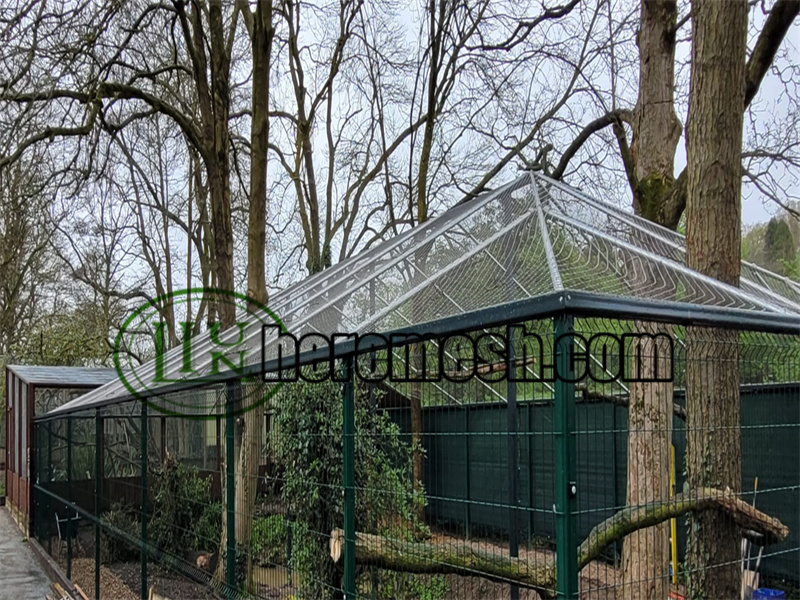
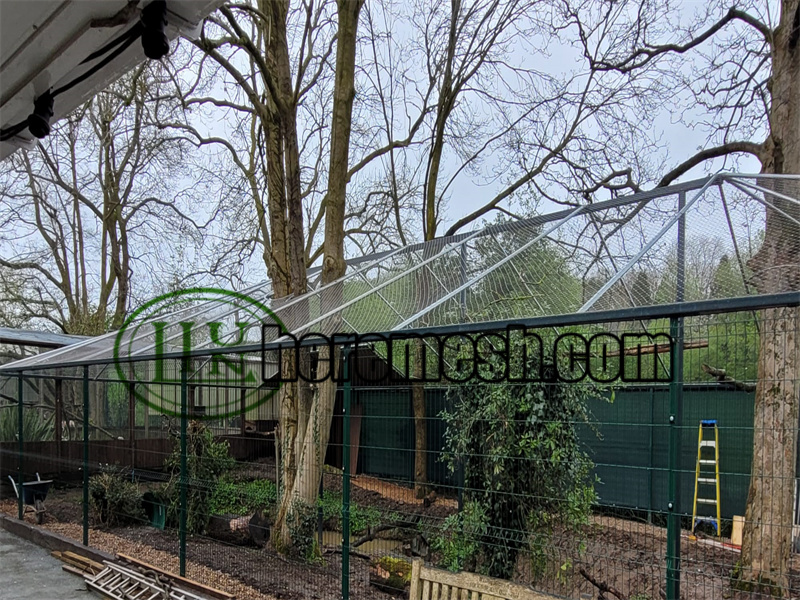
Diverse applications of ferrule mesh in aviary construction
Stainless steel ferrule mesh, with its high strength, corrosion resistance, and safety and reliability, plays a crucial role in the construction of various bird enclosures. Different bird species have varying requirements for enclosures, and ferrule mesh can be customized by adjusting materials, specifications, and structural design to meet the needs of multiple bird species. The following are its diverse applications in bird enclosures:
1. Large Parrot Aviaries (Macaws, Kea Parrots)
Large parrots have extremely strong beaks, and ordinary wire mesh can be easily bitten through. Parrot aviaries must use sturdy stainless steel ferrule mesh (recommended rope diameter: 1.6–2.0 mm). The mesh panels must be welded to a heavy-duty steel frame to ensure the stability of the aviary. Since these birds are highly intelligent and skilled at climbing, the top of the aviary must be enclosed to prevent escape. Additionally, the mesh can be paired with natural wooden perches and chew toys to reduce damage to the enclosure.
2. Raptor aviaries (eagles, owls)
Raptors have highly destructive claws and beaks, and their flight impact force is strong. Therefore, the aviary netting must have extremely high tensile strength. It is recommended to use 316 stainless steel mesh with steel cables for additional support to prevent injuries from raptors diving. The aviary height should be sufficiently high to accommodate flight training requirements. To prevent raptor claws from getting stuck in the mesh, the connections between mesh panels must be smooth and free of burrs, and regular inspections should be conducted to check for loosening or deformation.
3. Waterfowl enclosures (flamingos)
Waterfowl enclosures typically require contact with water bodies, so the fencing must be moisture-resistant and rust-proof. Stainless steel ferrule mesh can withstand prolonged immersion in water without corrosion and is more durable than galvanized mesh. For swimming areas, a design with denser mesh at the bottom can be used to prevent waterfowl heads from getting stuck. Fence heights of 1.5–2 meters are typically sufficient, but the top must be enclosed or sloped outward to prevent waterfowl from escaping.
4. Small songbird enclosures (canaries, parrot chicks)
Small birds are lightweight but may escape or get injured if the mesh is too large, so a fine-mesh stainless steel ferrule mesh should be used. Since songbirds are sensitive to light, dark-colored mesh panels can be selected for the aviary to reduce glare stimulation.
5. Open-air bird enclosures in zoos
In open-air flight enclosures, stainless steel ferrule mesh can be used for large domes or tunnel structures to provide an unobstructed viewing experience. The mesh must have high transparency (e.g., using extremely fine stainless steel wire + black oxidized mesh) and be supported by a steel frame to ensure structural stability. Since different bird species are kept together, the mesh size must be chosen as a compromise to prevent small birds from escaping while not restricting the movement of medium-sized birds. A double-door access control system can be installed at the entrance to prevent birds from escaping.
Conclusion
Stainless steel ferrule nets are customizable to suit the physiological and behavioral needs of different birds. They are widely used in parrot houses, raptor centers, waterfowl lakes, songbird exhibition areas, and other settings. By selecting appropriate mesh sizes, wire diameter specifications, and installation methods, this mesh not only ensures bird safety but also enhances aesthetic appeal and management efficiency, making it an ideal choice for modern bird-keeping facilities.


